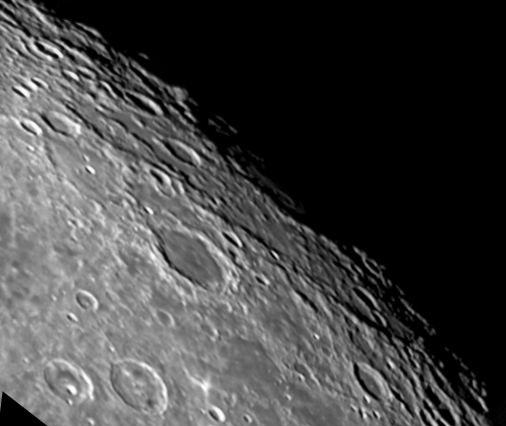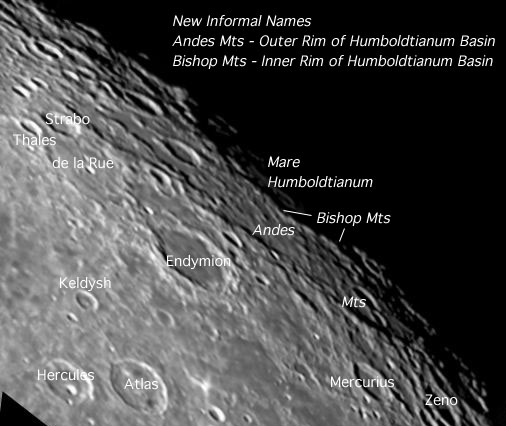Difference between revisions of "October 30, 2004"
| Line 57: | Line 57: | ||
===COMMENTS?=== | ===COMMENTS?=== | ||
Register, and click on the <b>Discussion</b> tab at the top of the page. | Register, and click on the <b>Discussion</b> tab at the top of the page. | ||
| + | <hr> | ||
| + | <!-- | ||
| + | You can support LPOD when you buy any book from Amazon thru [[Support_ LPOD|LPOD]]! | ||
| + | --> | ||
| + | <span style="font-size:88%"> | ||
| + | <center> | ||
| + | Contributions to http://www2.lpod.org/ are licensed under a Creative Commons Attribution No-Derivative-Works Non-Commercial 3.0 License. [http://www.creativecommons.org/licenses/by-nc-nd/3.0 http://www.wikispaces.com/i/creativecommons/by-nc-nd_3.0_80x15.png]<br> | ||
| + | </center> | ||
| + | </span> | ||
Revision as of 11:22, 1 February 2015
Another Basin on Another Limb
Image Credit: Dave Nash |
|
Another Basin on Another Limb It's not fair! On the Earth-facing side of the Moon only two impact basins have significant rim segments - Imbrium and Nectaris. But just over the western limb is Orientale, one of the most complete basins in the solar system, and on the NE limb is Humboldtianum, another basin with significant preserved rims. What's even less fair is that most of these basins have named rims: the Apennines, the Caucasus, the Altai, the Cordillera and the Rook. But as shown in Dave's excellent image, the inner and outer rings of the Humboldtianum basin are quite prominent, yet they are unnamed. I hereby propose some informal names for these rings to ease discussion of them. Following the common habit of naming lunar mountains after terrestrial mountains, I propose that the 650 km wide outer ring of the Humboldtianum basin be named the Andes Mountains, which reflects Alexander von Humboldt's exploration of this South American range. And since the inner ring of the Orientale basin is called the Rook Mountains, for symmetry (and thinking back to my chess playing days), the 340 km diameter inner Humboldtianum ring is here named the Bishop Mountains. Now all that is needed to really appreciate these rings is a rectification of this image! Technical Details: Related Links: Tomorrow's LPOD: Sunrise and Sunset on the Triade |
|
Author & Editor: Technical Consultant: Contact Translator: A service of: |
COMMENTS?
Register, and click on the Discussion tab at the top of the page.
Contributions to http://www2.lpod.org/ are licensed under a Creative Commons Attribution No-Derivative-Works Non-Commercial 3.0 License. 





